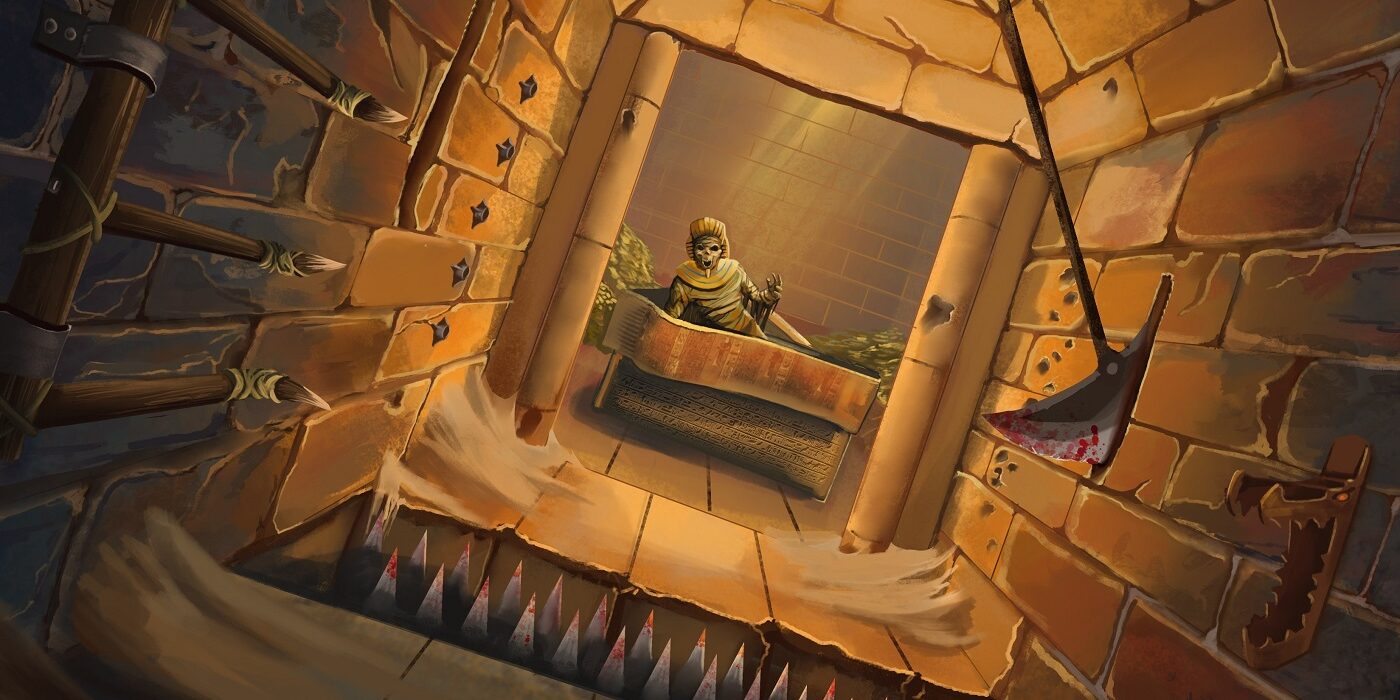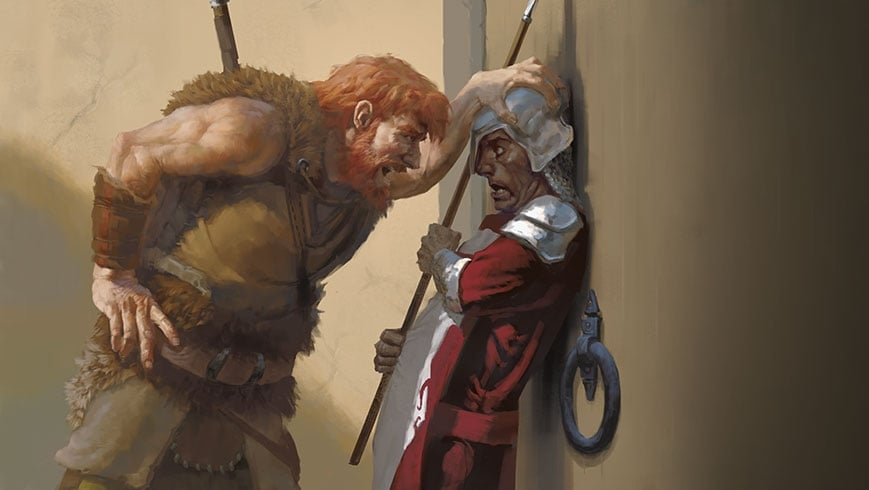D&D: Five Handy Tricks For Finding Traps

If you’re planning a heist, one thing you’ll have to worry about is finding a trap. Don’t worry, we’re here to help.
D&D and traps have gone hand in hand since the beginning. In the lethal early days of Dungeons & Dragons, spiked pits abounded just on the other side of every door. Every dungeon was a Gygaxian deathtrap that didn’t play fair. And while the game might have moved away from the “haha you did the wrong thing you die” ethos of its creator, traps are still a part of the game.
Here are a few ways you can find them, with a little effort, and a little luck.
Stack That Perception Bonus Unnecessarily High
One of the only skills any D&D character needs is Perception. It lets you notice hiding enemies. Helps the DM move the game along when it’s clearly stalled out (nothing like “make a perception check” to kickstart some action). But most of all, Perception helps you find traps. You might think it’s the Investigation skill, which says “you might deduce the location of a hidden object.” However, on the same page as the skill, is a little box text that says:
When your character searches for a hidden object such as a secret door or trap, the DM typically asks you to make a Wisdom (Perception) check.
So, Perception it is.
Start by playing a Rogue or Bard, which gives you expertise in skills, just pick Perception and you’re good to go. Then, take the Observant feat, which adds another +5 to your passive Perception score while also adding to your Wisdom modifier.
If that’s not enough, keep adding on magic items that can help your Perception. You’ll be spotting traps without even trying before you know it.
Interrogate a Guard
Worried about traps but don’t have the Wisdom to make a good perception bonus? Just capture and interrogate someone guarding the dungeon you’re exploring. The vast majority of D&D characters have high strength and/or charisma, so put those to work. Intimidate or persuade your enemy into telling you if there are any traps around.
You might need someone with a Zone of Truth or a good Insight score to help determine if they’re lying. But you can always ask someone, and you’d be surprised at how often they’ll answer.
Use Magic
Not the Find Traps spell, mind you. That spell only works if you happen to be within both 120 and line of sight for any given trap. It takes an action to cast, and it costs you a whole 2nd level spell slot, and on top of all of that, the spell doesn’t tell you the location of a trap, just that one is present.
Instead, use a spell like conjure woodland beings to summon up a bunch of animals and send them rushing ahead of you. Then watch and see what happens. If you don’t find any traps, follow in their footsteps. If they set one off? Well congratulations, you found a trap.
Try a Different Skill
While Perception is the default way to find a trap, sometimes you can glean more information out of your DM by trying something a little different. It can get tiring to hear “PERCEPTION CHECK” shouted at the top of someone’s lungs every time the party opens a door.
If you instead say something like “would my knowledge of arcana/history/religion give me an idea as to whether this room might be trapped?” The same goes for natural sites. Or specific enemy types if you’re a Ranger who has a favored enemy. Look for reasons your character might be suspicious and bring them up.
It’ll make the session a little more immersive if nothing else.
Bring a Healer
Of course, the quickest way to find traps is to not care about them. And in D&D, that typically means having someone who can top up the ol’ hit point tank following behind you. Just make sure they walk where you do (so as not to set off anything that you happen to miss) and have them keep pouring red juice or healing words into you until you get wherever it is you’re trying to go.
Nothing beats having a big sack of hit points that never runs out.
Happy Adventuring









